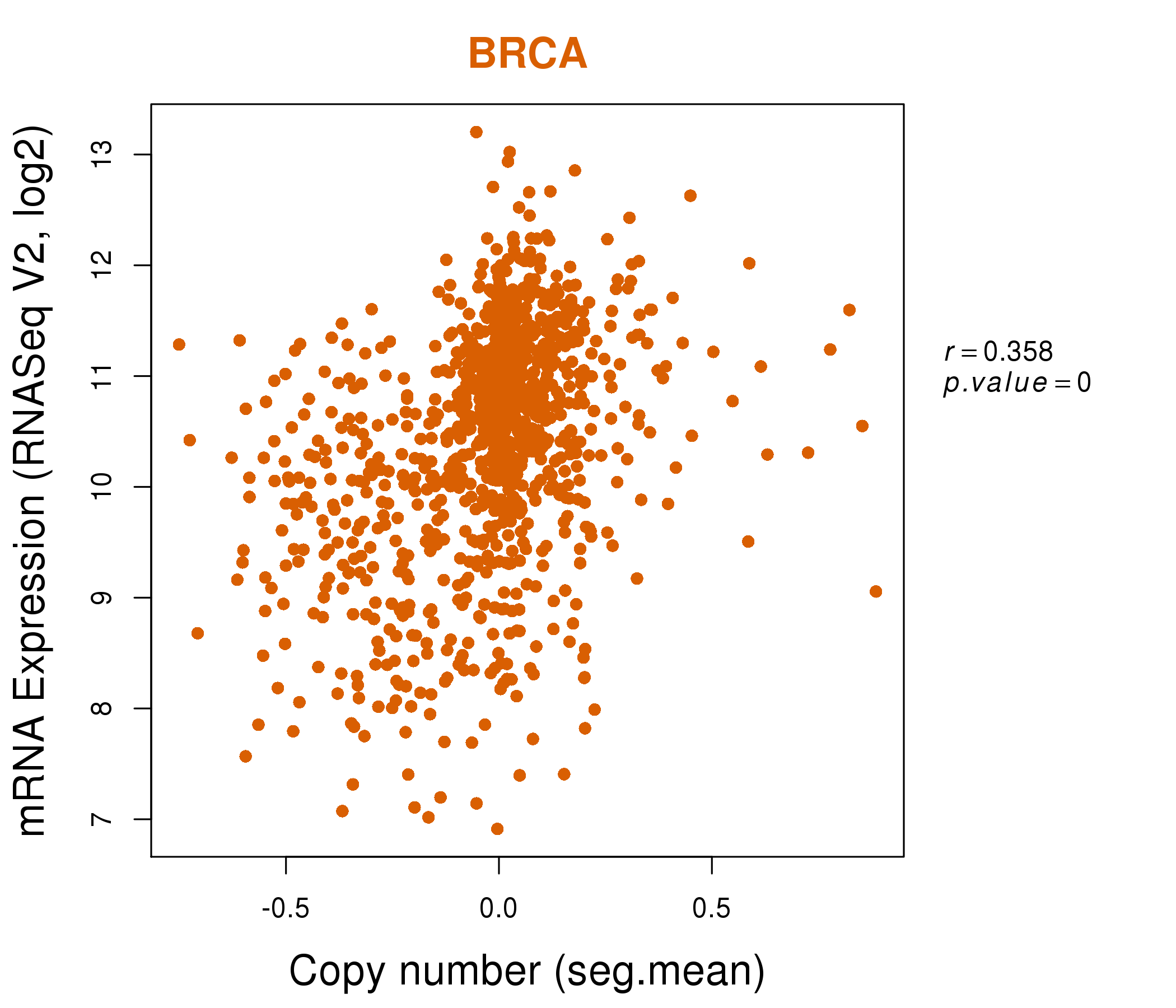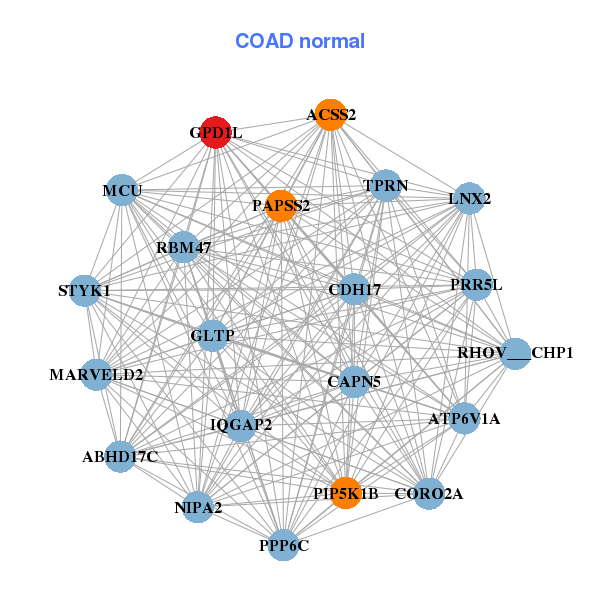|
||||||||||||||||||||||||||||||||||||||||||||||||||||||||||||||||||||||||||||||||||||||||||||||||||||||||||||||||||||||||||||||||||||||||||||||||||||||||||||||||||||||||||||||||||||||||||||||||||||||||||||||||||||||||||||||||||||||||||||||||||||||||||||||||||||||||||||||||||||||||||||||||||||||||||||||||||||||||||
| |
| Phenotypic Information (metabolism pathway, cancer, disease, phenome) |
| |
| |
| Gene-Gene Network Information: Co-Expression Network, Interacting Genes & KEGG |
| |
|
| Gene Summary for GPD1L |
| Basic gene info. | Gene symbol | GPD1L |
| Gene name | glycerol-3-phosphate dehydrogenase 1-like | |
| Synonyms | GPD1-L | |
| Cytomap | UCSC genome browser: 3p22.3 | |
| Genomic location | chr3 :32148002-32210207 | |
| Type of gene | protein-coding | |
| RefGenes | NM_015141.3, | |
| Ensembl id | ENSG00000152642 | |
| Description | glycerol-3-phosphate dehydrogenase 1-like protein | |
| Modification date | 20141219 | |
| dbXrefs | MIM : 611778 | |
| HGNC : HGNC | ||
| Ensembl : ENSG00000152642 | ||
| HPRD : 10008 | ||
| Vega : OTTHUMG00000155846 | ||
| Protein | UniProt: go to UniProt's Cross Reference DB Table | |
| Expression | CleanEX: HS_GPD1L | |
| BioGPS: 23171 | ||
| Gene Expression Atlas: ENSG00000152642 | ||
| The Human Protein Atlas: ENSG00000152642 | ||
| Pathway | NCI Pathway Interaction Database: GPD1L | |
| KEGG: GPD1L | ||
| REACTOME: GPD1L | ||
| ConsensusPathDB | ||
| Pathway Commons: GPD1L | ||
| Metabolism | MetaCyc: GPD1L | |
| HUMANCyc: GPD1L | ||
| Regulation | Ensembl's Regulation: ENSG00000152642 | |
| miRBase: chr3 :32,148,002-32,210,207 | ||
| TargetScan: NM_015141 | ||
| cisRED: ENSG00000152642 | ||
| Context | iHOP: GPD1L | |
| cancer metabolism search in PubMed: GPD1L | ||
| UCL Cancer Institute: GPD1L | ||
| Assigned class in ccmGDB | C | |
| Top |
| Phenotypic Information for GPD1L(metabolism pathway, cancer, disease, phenome) |
| Cancer | CGAP: GPD1L |
| Familial Cancer Database: GPD1L | |
| * This gene is included in those cancer gene databases. |
|
|
|
|
|
|
| ||||||||||||||||||||||||||||||||||||||||||||||||||||||||||||||||||||||||||||||||||||||||||||||||||||||||||||||||||||||||||||||||||||||||||||||||||||||||||||||||||||||||||||||||||||||||||||||||||||||||||||||||||||||||||||||||||||||||||||||||||||||||||||||||||||||||||||||||||||||||||||||||||||||||||||||||||||
Oncogene 1 | Significant driver gene in | |||||||||||||||||||||||||||||||||||||||||||||||||||||||||||||||||||||||||||||||||||||||||||||||||||||||||||||||||||||||||||||||||||||||||||||||||||||||||||||||||||||||||||||||||||||||||||||||||||||||||||||||||||||||||||||||||||||||||||||||||||||||||||||||||||||||||||||||||||||||||||||||||||||||||||||||||||||||||
| cf) number; DB name 1 Oncogene; http://nar.oxfordjournals.org/content/35/suppl_1/D721.long, 2 Tumor Suppressor gene; https://bioinfo.uth.edu/TSGene/, 3 Cancer Gene Census; http://www.nature.com/nrc/journal/v4/n3/abs/nrc1299.html, 4 CancerGenes; http://nar.oxfordjournals.org/content/35/suppl_1/D721.long, 5 Network of Cancer Gene; http://ncg.kcl.ac.uk/index.php, 1Therapeutic Vulnerabilities in Cancer; http://cbio.mskcc.org/cancergenomics/statius/ |
| KEGG_GLYCEROPHOSPHOLIPID_METABOLISM REACTOME_PHOSPHOLIPID_METABOLISM REACTOME_METABOLISM_OF_LIPIDS_AND_LIPOPROTEINS | |
| OMIM | |
| Orphanet | |
| Disease | KEGG Disease: GPD1L |
| MedGen: GPD1L (Human Medical Genetics with Condition) | |
| ClinVar: GPD1L | |
| Phenotype | MGI: GPD1L (International Mouse Phenotyping Consortium) |
| PhenomicDB: GPD1L | |
| Mutations for GPD1L |
| * Under tables are showing count per each tissue to give us broad intuition about tissue specific mutation patterns.You can go to the detailed page for each mutation database's web site. |
| - Statistics for Tissue and Mutation type | Top |
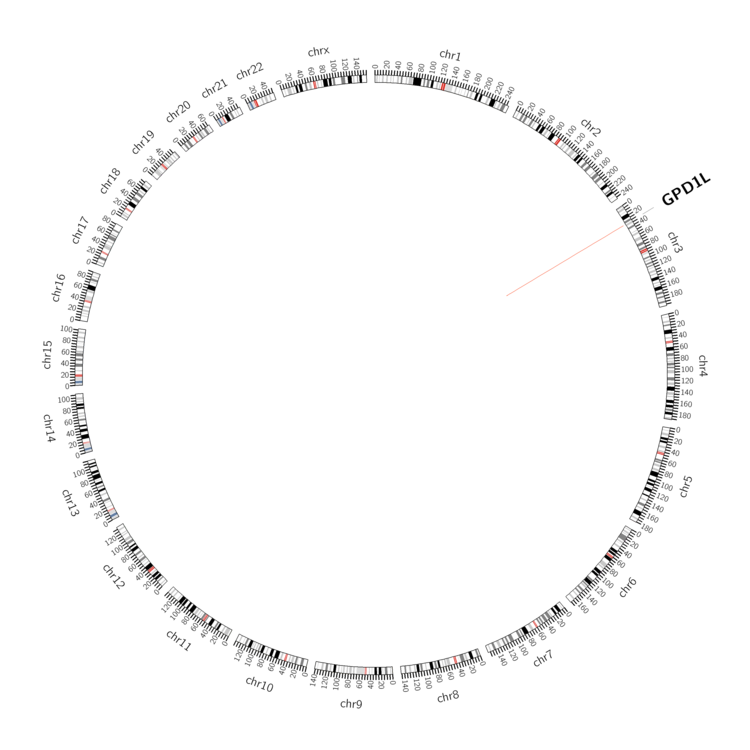 |
| - For Inter-chromosomal Variations |
| There's no inter-chromosomal structural variation. |
| - For Intra-chromosomal Variations |
| * Intra-chromosomal variantions includes 'intrachromosomal amplicon to amplicon', 'intrachromosomal amplicon to non-amplified dna', 'intrachromosomal deletion', 'intrachromosomal fold-back inversion', 'intrachromosomal inversion', 'intrachromosomal tandem duplication', 'Intrachromosomal unknown type', 'intrachromosomal with inverted orientation', 'intrachromosomal with non-inverted orientation'. |
 |
| Sample | Symbol_a | Chr_a | Start_a | End_a | Symbol_b | Chr_b | Start_b | End_b |
| pancreas | GPD1L | chr3 | 32160631 | 32160651 | GPD1L | chr3 | 32161221 | 32161241 |
| pancreas | GPD1L | chr3 | 32186547 | 32186567 | GPD1L | chr3 | 32186810 | 32186830 |
| cf) Tissue number; Tissue name (1;Breast, 2;Central_nervous_system, 3;Haematopoietic_and_lymphoid_tissue, 4;Large_intestine, 5;Liver, 6;Lung, 7;Ovary, 8;Pancreas, 9;Prostate, 10;Skin, 11;Soft_tissue, 12;Upper_aerodigestive_tract) |
| * From mRNA Sanger sequences, Chitars2.0 arranged chimeric transcripts. This table shows GPD1L related fusion information. |
| ID | Head Gene | Tail Gene | Accession | Gene_a | qStart_a | qEnd_a | Chromosome_a | tStart_a | tEnd_a | Gene_a | qStart_a | qEnd_a | Chromosome_a | tStart_a | tEnd_a |
| DA778688 | ZEB2 | 1 | 123 | 2 | 145274917 | 145277558 | GPD1L | 123 | 559 | 3 | 32148134 | 32180220 | |
| BF849090 | GPD1L | 1 | 119 | 3 | 32210011 | 32210129 | UBE2G1 | 113 | 441 | 17 | 4268209 | 4268537 | |
| BF849097 | GPD1L | 1 | 145 | 3 | 32210011 | 32210156 | UBE2G1 | 139 | 466 | 17 | 4268209 | 4268537 | |
| Top |
| Mutation type/ Tissue ID | brca | cns | cerv | endome | haematopo | kidn | Lintest | liver | lung | ns | ovary | pancre | prost | skin | stoma | thyro | urina | |||
| Total # sample | 1 | |||||||||||||||||||
| GAIN (# sample) | 1 | |||||||||||||||||||
| LOSS (# sample) |
| cf) Tissue ID; Tissue type (1; Breast, 2; Central_nervous_system, 3; Cervix, 4; Endometrium, 5; Haematopoietic_and_lymphoid_tissue, 6; Kidney, 7; Large_intestine, 8; Liver, 9; Lung, 10; NS, 11; Ovary, 12; Pancreas, 13; Prostate, 14; Skin, 15; Stomach, 16; Thyroid, 17; Urinary_tract) |
| Top |
|
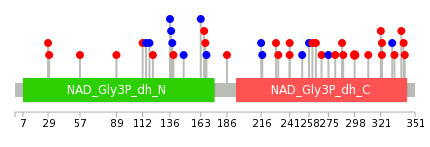 |
| Top |
| Stat. for Non-Synonymous SNVs (# total SNVs=21) | (# total SNVs=8) |
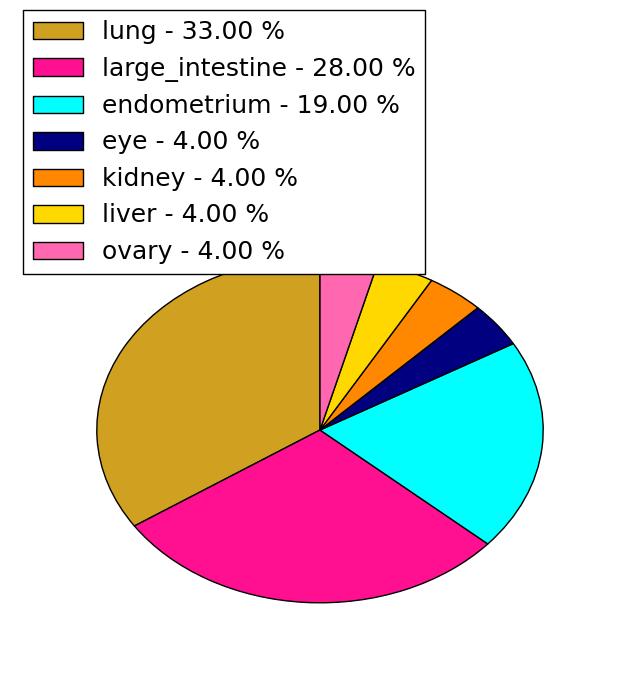 | 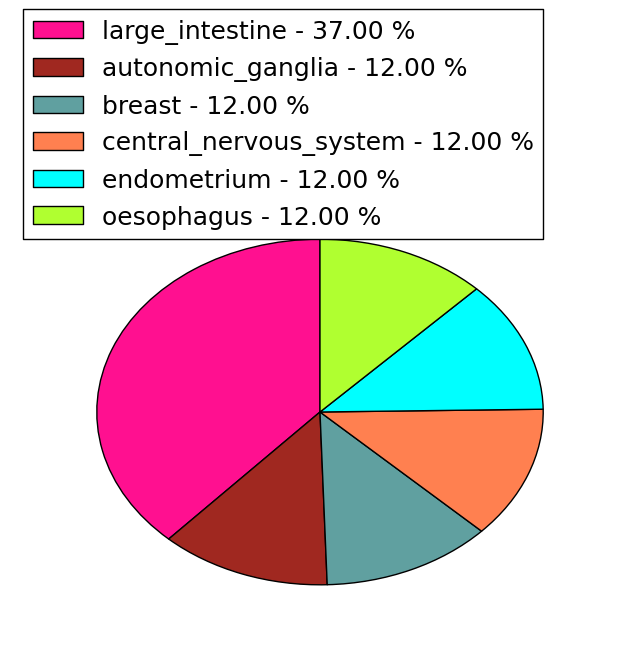 |
(# total SNVs=1) | (# total SNVs=0) |
 |
| Top |
| * When you move the cursor on each content, you can see more deailed mutation information on the Tooltip. Those are primary_site,primary_histology,mutation(aa),pubmedID. |
| GRCh37 position | Mutation(aa) | Unique sampleID count |
| chr3:32201101-32201101 | p.K298N | 2 |
| chr3:32181850-32181850 | p.T166I | 1 |
| chr3:32200505-32200505 | p.A252A | 1 |
| chr3:32180188-32180188 | p.P112L | 1 |
| chr3:32207308-32207308 | p.F321Y | 1 |
| chr3:32181853-32181853 | p.T167I | 1 |
| chr3:32200523-32200523 | p.C258C | 1 |
| chr3:32180198-32180198 | p.A115A | 1 |
| chr3:32207310-32207310 | p.P322S | 1 |
| chr3:32181857-32181857 | p.I168I | 1 |
| Top |
|
 |
| Point Mutation/ Tissue ID | 1 | 2 | 3 | 4 | 5 | 6 | 7 | 8 | 9 | 10 | 11 | 12 | 13 | 14 | 15 | 16 | 17 | 18 | 19 | 20 |
| # sample | 1 | 1 | 6 | 1 | 1 | 6 | 1 | 3 | 6 | 4 | ||||||||||
| # mutation | 1 | 1 | 7 | 1 | 1 | 7 | 1 | 3 | 6 | 4 | ||||||||||
| nonsynonymous SNV | 1 | 5 | 1 | 7 | 1 | 3 | 3 | 3 | ||||||||||||
| synonymous SNV | 1 | 2 | 1 | 3 | 1 |
| cf) Tissue ID; Tissue type (1; BLCA[Bladder Urothelial Carcinoma], 2; BRCA[Breast invasive carcinoma], 3; CESC[Cervical squamous cell carcinoma and endocervical adenocarcinoma], 4; COAD[Colon adenocarcinoma], 5; GBM[Glioblastoma multiforme], 6; Glioma Low Grade, 7; HNSC[Head and Neck squamous cell carcinoma], 8; KICH[Kidney Chromophobe], 9; KIRC[Kidney renal clear cell carcinoma], 10; KIRP[Kidney renal papillary cell carcinoma], 11; LAML[Acute Myeloid Leukemia], 12; LUAD[Lung adenocarcinoma], 13; LUSC[Lung squamous cell carcinoma], 14; OV[Ovarian serous cystadenocarcinoma ], 15; PAAD[Pancreatic adenocarcinoma], 16; PRAD[Prostate adenocarcinoma], 17; SKCM[Skin Cutaneous Melanoma], 18:STAD[Stomach adenocarcinoma], 19:THCA[Thyroid carcinoma], 20:UCEC[Uterine Corpus Endometrial Carcinoma]) |
| Top |
| * We represented just top 10 SNVs. When you move the cursor on each content, you can see more deailed mutation information on the Tooltip. Those are primary_site, primary_histology, mutation(aa), pubmedID. |
| Genomic Position | Mutation(aa) | Unique sampleID count |
| chr3:32181857 | p.H97N | 1 |
| chr3:32201136 | p.C258C | 1 |
| chr3:32180142 | p.P112L | 1 |
| chr3:32188164 | p.A261V | 1 |
| chr3:32207308 | p.A115A | 1 |
| chr3:32180188 | p.I264F | 1 |
| chr3:32188176 | p.I118I | 1 |
| chr3:32207310 | p.R281K | 1 |
| chr3:32180198 | p.I121M | 1 |
| chr3:32200400 | p.E288Q | 1 |
| * Copy number data were extracted from TCGA using R package TCGA-Assembler. The URLs of all public data files on TCGA DCC data server were gathered on Jan-05-2015. Function ProcessCNAData in TCGA-Assembler package was used to obtain gene-level copy number value which is calculated as the average copy number of the genomic region of a gene. |
 |
| cf) Tissue ID[Tissue type]: BLCA[Bladder Urothelial Carcinoma], BRCA[Breast invasive carcinoma], CESC[Cervical squamous cell carcinoma and endocervical adenocarcinoma], COAD[Colon adenocarcinoma], GBM[Glioblastoma multiforme], Glioma Low Grade, HNSC[Head and Neck squamous cell carcinoma], KICH[Kidney Chromophobe], KIRC[Kidney renal clear cell carcinoma], KIRP[Kidney renal papillary cell carcinoma], LAML[Acute Myeloid Leukemia], LUAD[Lung adenocarcinoma], LUSC[Lung squamous cell carcinoma], OV[Ovarian serous cystadenocarcinoma ], PAAD[Pancreatic adenocarcinoma], PRAD[Prostate adenocarcinoma], SKCM[Skin Cutaneous Melanoma], STAD[Stomach adenocarcinoma], THCA[Thyroid carcinoma], UCEC[Uterine Corpus Endometrial Carcinoma] |
| Top |
| Gene Expression for GPD1L |
| * CCLE gene expression data were extracted from CCLE_Expression_Entrez_2012-10-18.res: Gene-centric RMA-normalized mRNA expression data. |
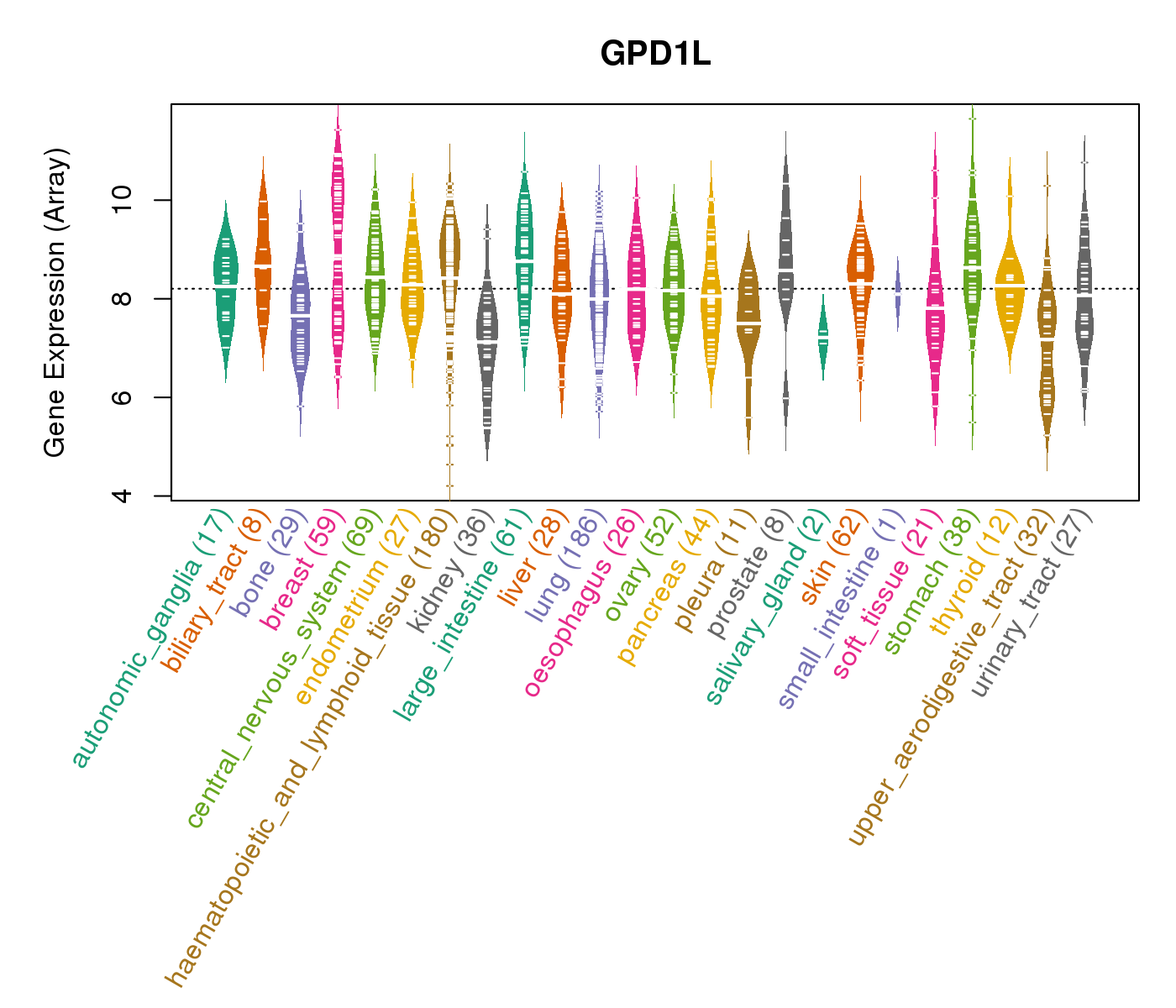 |
| * Normalized gene expression data of RNASeqV2 was extracted from TCGA using R package TCGA-Assembler. The URLs of all public data files on TCGA DCC data server were gathered at Jan-05-2015. Only eight cancer types have enough normal control samples for differential expression analysis. (t test, adjusted p<0.05 (using Benjamini-Hochberg FDR)) |
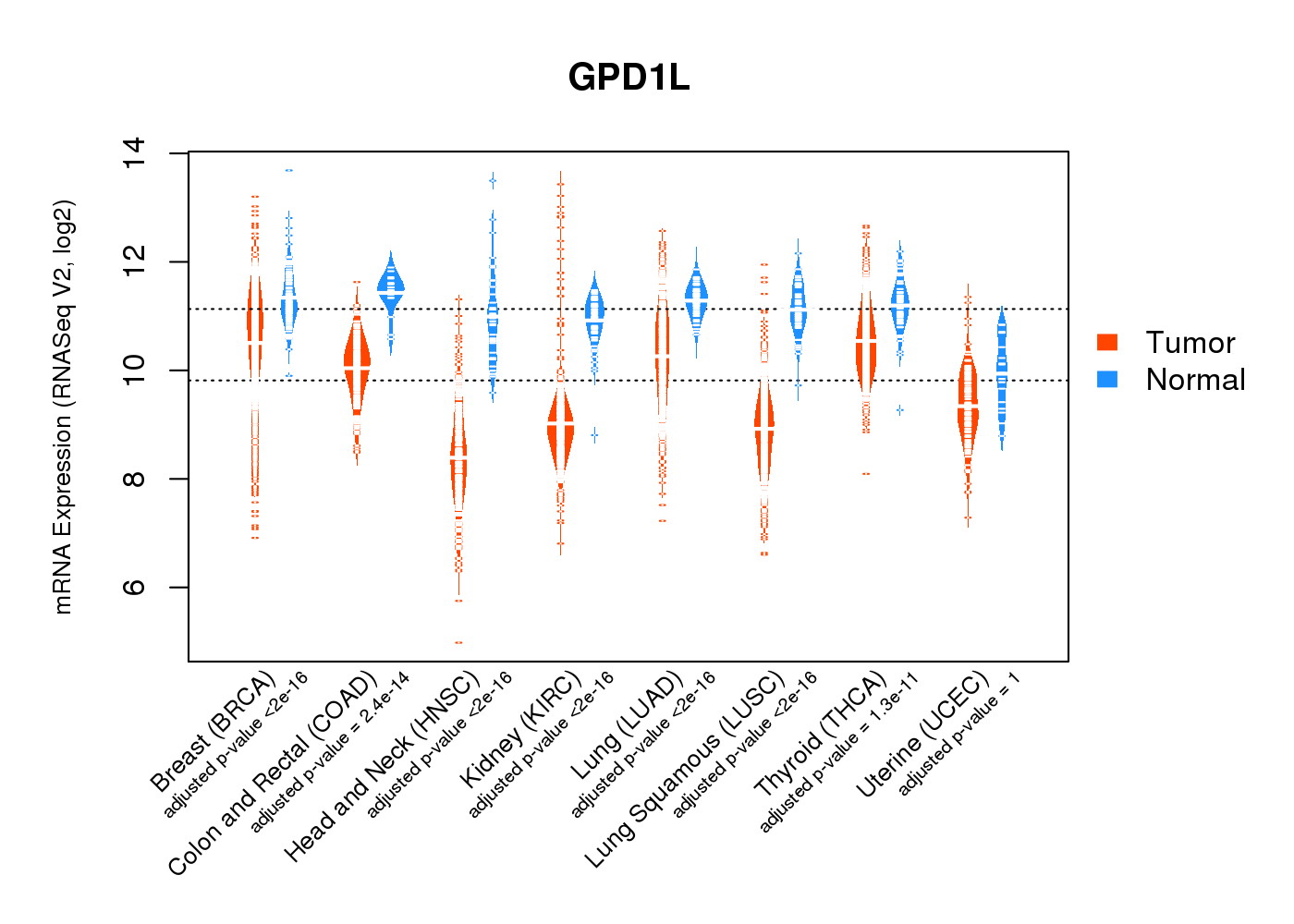 |
| Top |
| * This plots show the correlation between CNV and gene expression. |
: Open all plots for all cancer types
 |
|
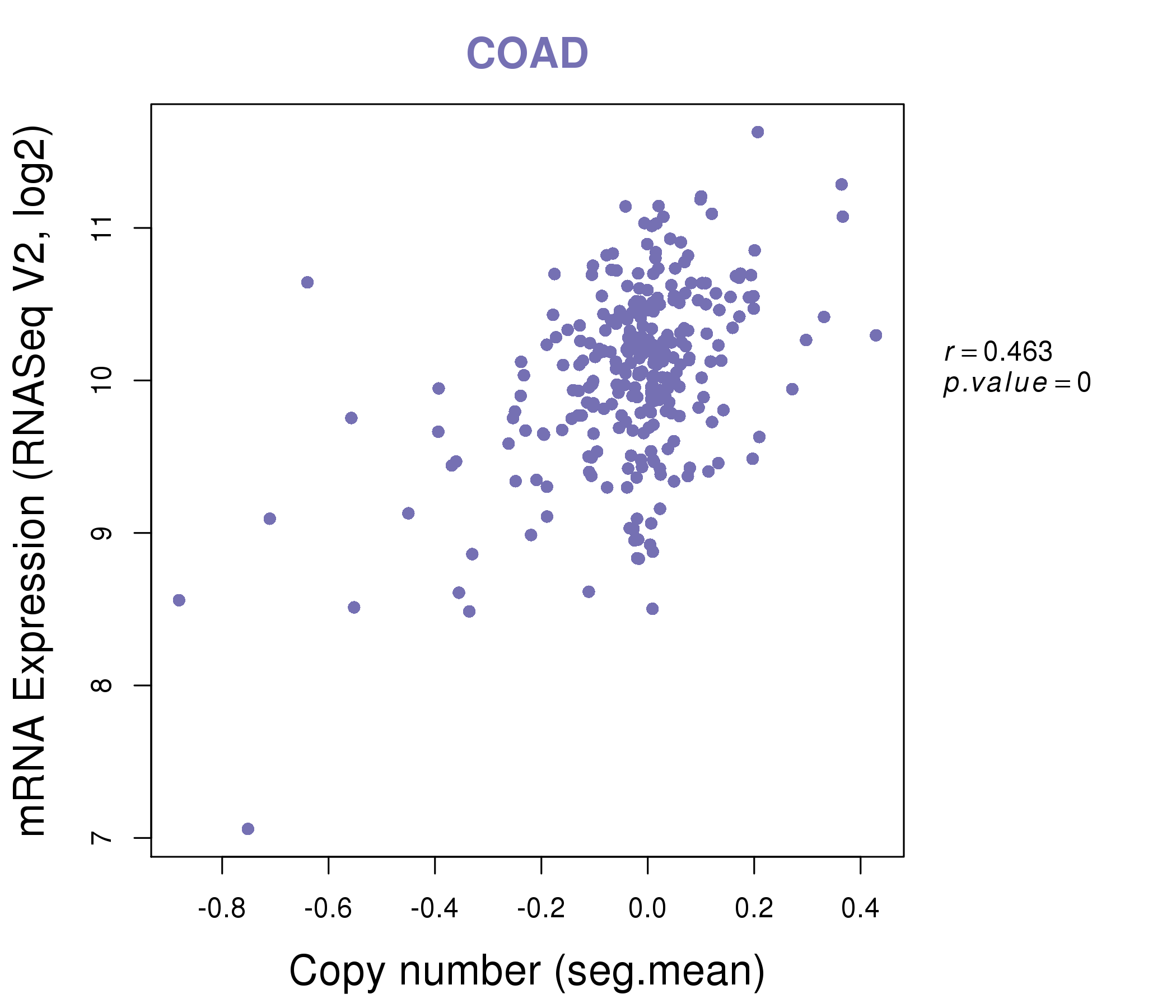 |
|
| Top |
| Gene-Gene Network Information |
| * Co-Expression network figures were drawn using R package igraph. Only the top 20 genes with the highest correlations were shown. Red circle: input gene, orange circle: cell metabolism gene, sky circle: other gene |
: Open all plots for all cancer types
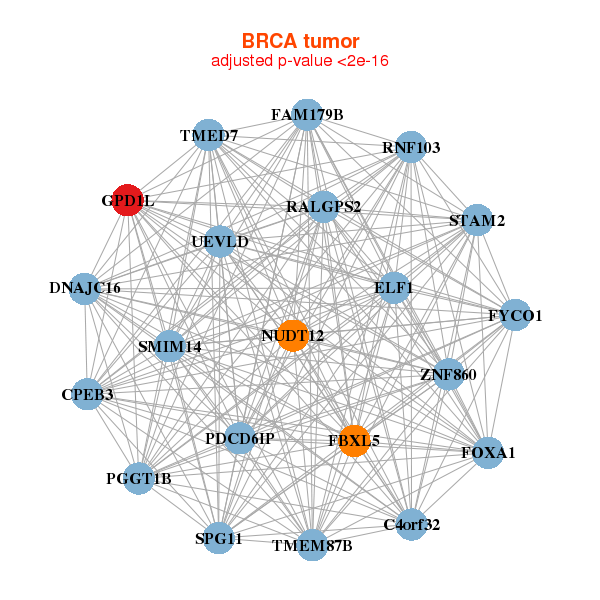 |
|
| C4orf32,SMIM14,CPEB3,DNAJC16,ELF1,FAM179B,FBXL5, FOXA1,FYCO1,GPD1L,NUDT12,PDCD6IP,PGGT1B,RALGPS2, RNF103,SPG11,STAM2,TMED7,TMEM87B,UEVLD,ZNF860 | ABCB7,ATP5S,ADCK3,CHCHD10,FAM134B,GKAP1,GPD1L, GPHN,L2HGDH,LRPPRC,MKNK2,OXA1L,PDHX,PDK2, PPARA,SLC2A4,SUCLG2,TARSL2,TMLHE,UQCRC2,VDAC2 |
 |
|
| ANKRD28,SOWAHB,ATP10B,C10orf99,DLD,ENTPD5,EPB41L4B, GPD1L,HOOK1,LARS2,LRRC31,MFN1,NGLY1,OXNAD1, PDCD6IP,SATB2,SGK2,SLC16A9,SLC9A2,SNX4,SUCLG2 | ACSS2,ATP6V1A,CAPN5,MCU,CDH17,RHOV___CHP1,CORO2A, ABHD17C,GLTP,GPD1L,IQGAP2,LNX2,MARVELD2,NIPA2, PAPSS2,PIP5K1B,PPP6C,PRR5L,RBM47,STYK1,TPRN |
| * Co-Expression network figures were drawn using R package igraph. Only the top 20 genes with the highest correlations were shown. Red circle: input gene, orange circle: cell metabolism gene, sky circle: other gene |
: Open all plots for all cancer types
| Top |
: Open all interacting genes' information including KEGG pathway for all interacting genes from DAVID
| Top |
| Pharmacological Information for GPD1L |
| There's no related Drug. |
| Top |
| Cross referenced IDs for GPD1L |
| * We obtained these cross-references from Uniprot database. It covers 150 different DBs, 18 categories. http://www.uniprot.org/help/cross_references_section |
: Open all cross reference information
|
Copyright © 2016-Present - The Univsersity of Texas Health Science Center at Houston @ |






